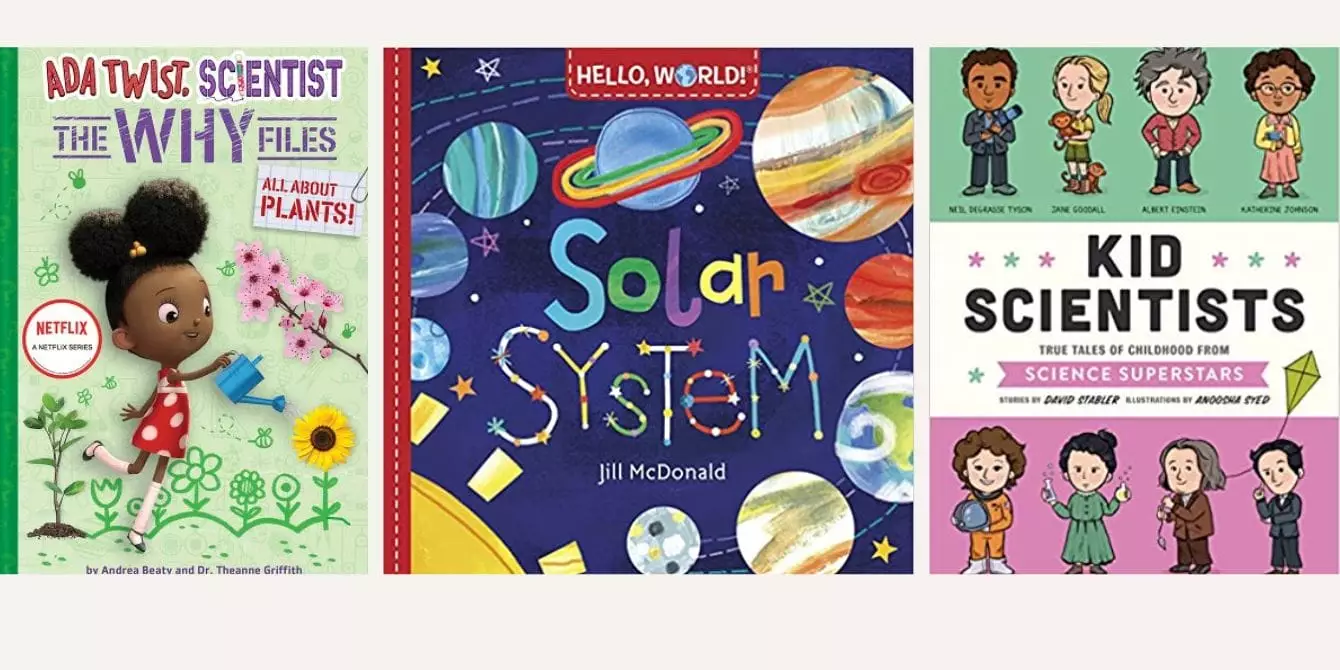Children naturally embody a unique spirit of curiosity that drives them to inquire about the world around them. From the simplest observations—like the intricate fluttering of a butterfly to deeper complex phenomena—kids are born scientists at heart. This innate curiosity serves as a foundation upon which a lifelong love for learning can be built, especially in fields such as science, technology, engineering, and mathematics (STEM). By feeding this thirst for knowledge with the right literature, families can cultivate an environment that nurtures exploration and inquiry.
Rather than seeking just textbooks that are laden with dry content, parents and educators should look for books that present scientific topics in a relatable and engaging way. Whether through vibrant visuals, engaging stories, or hands-on experiments, these age-appropriate books can aid in imparting key scientific concepts and making them relatable to young readers. They have the potential to benefit not only children but also adult companions who engage with them during the reading process.
One wonderful book for capturing this sense of wonder examines the life of a unique bat named Fiona, the protagonist of a charming narrative geared towards children aged 3 to 7. Written by a bat expert, Fiona’s story explores her fear of flying and her eventual mastery of echolocation—a fascinating concept rooted in science. The book boasts engaging illustrations that enhance the surrounding imagery while simultaneously educating young readers about this form of navigation. At the back, children are met with a practical activity that encourages them to mimic echolocation, merging the wondrous world of science with playful interaction.
Not limited to the animal kingdom, another vividly illustrated book introduces young readers to bioluminescent nature, inviting them to dive into a beautifully rhymed narrative that balances story and science. Aimed at children aged 4 to 8, it stimulates an appreciation of natural phenomena while fostering language development. It’s proof that the right blend of storytelling and scientific exploration can leave a lasting impression on a child’s mind.
Exploring Anatomy and Botany
Shifting from wildlife to the human body, an innovative anatomy book with layered illustrations captures the essence of our internal structures. Suitable for ages 7 to 10, its approachable tone appeals to young readers, encouraging them to embrace scientific concepts even at an early age. The visuals will engage curious minds, prompting fascination while demystifying a complex subject.
Similarly, the realm of botany unfolds before young readers through a captivating scrapbook-like book associated with the popular character Ada Twist, Scientist. It targets early elementary-aged students and is enriched with visual elements to hold their interest. The engaging narrative intertwines with practical science lessons, making it ideal for young learners eager to connect with the botanical world.
Instilling a sense of history within the realm of science, the “Kid Legends” series interweaves narratives about renowned scientists with pivotal moments from their childhood. This approach not only entertains but also serves to inspire children, allowing them to visualize the process of inquiry, invention, and scientific inquiry as they learn about notable figures like Nikola Tesla. With illustrations to uplift each recounting, the book creates a captivating bridge connecting the past to the present, motivating kids aged 8 to 12 to explore their creativity.
Another compelling option, “Goodnight Stories for Rebel Girls,” highlights the untold stories of remarkable women throughout scientific history, paving a path for children to appreciate diversity within the scientific community. This book strikes a fine balance between education and inspiration, encouraging readers aged 6 to 10 to see science as an inclusive playground filled with pioneers from various backgrounds.
Sparking Interest in Chemistry and Physics
For older children aged 10 and up, a creative adaptation entitled “The Disappearing Spoon” captures the intersection of chemistry and storytelling in an imaginative way. It transforms traditional classroom lessons into fun narratives filled with historical and absurd anecdotes. By turning dry elements into captivating stories, authors can entice reluctant readers to grasp complex subjects without seeing them as mere memorization tasks.
Moreover, adventure awaits in the pages of scientific mysteries featuring protagonists like Izzy Newton and her fellow “S.M.A.R.T Squad.” As they navigate challenges that intertwine real-world issues with science, children aged 8 to 12 become immersed in thrilling plots that showcase problem-solving through a scientific lens.
Ultimately, the journey of scientific exploration does not conclude with childhood. The books mentioned in this exploration serve as flexible tools to ignite a passion for science that can last a lifetime. As children embark on these literary adventures, they learn not merely about isolated concepts but also thematic elements of curiosity and resilience. In a world replete with challenges, nurturing this curiosity is an invaluable gift, ensuring that future generations remain engaged in the ever-evolving dialogue between humanity and the mysteries of the universe.

